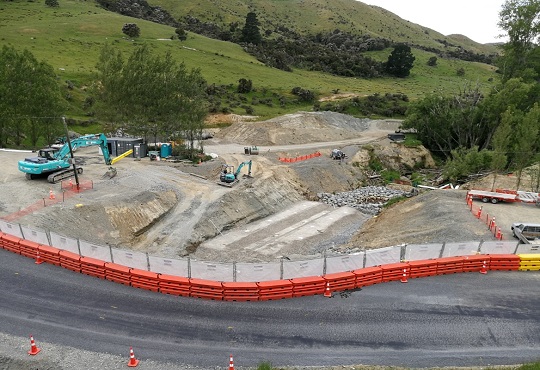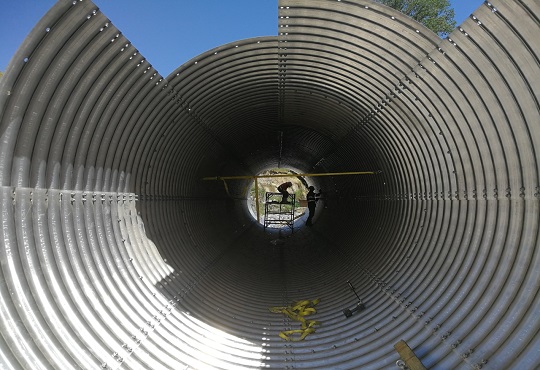Christchurch
Scope:
- Implementation of stream bypass system, utilising multiple pumps, a pressure discharge pipe and fish screens.
- Excavation and demolition of the existing concrete culvert structure.
- Excavation and placement of a rip rap discharge basin.
- Relocation of a temporary road, which had been built in the wrong place.
- Assembly and installation of a replacement 3.6m diameter x 33m long aluminium multi-plate culvert.
- Construction of in-situ concrete cut-off walls and concrete aprons for the culvert.
- Installation of a range of concrete stormwater pipes and headwalls to complete the new culvert.
Project Description
This project is notable for our innovative approach to develop an alternative, workable design and methodology. This included preassembling the structure in sections to accelerate the critical path of the project.
Once the project was underway, our ability to think on our feet and address unforeseen issues was key to project success. In particular, design changes were required due to the temporary road (previously installed by others) clashing with the alignment of the new culvert. In response to this the Seipp team was able to modify the installation methodology and sequencing to minimise the working room required, and minimise the movement required for the temporary road. The fact we were able to self-perform all aspects of the project drove significant benefit for our client. Our delivery of all dewatering, excavation, demolition, culvert placement, insitu concrete construction and pipe installation works achieved the time and cost efficiencies which made the competitive pricing our client required possible. This was primarily due to the minimisation of contractor interfaces for the client, and having greater flexibility with programming and overlapping time critical tasks. When unforeseen problems were encountered, the expertise of the multi-disciplinary team we had onsite meant we were able to rapidly come up with and implement solutions, despite the remoteness of the project location. There was no need to wait for additional staff to be deployed to site.
Client: NCTIR
Start Date: September 2017
Completion Date: February 2018













